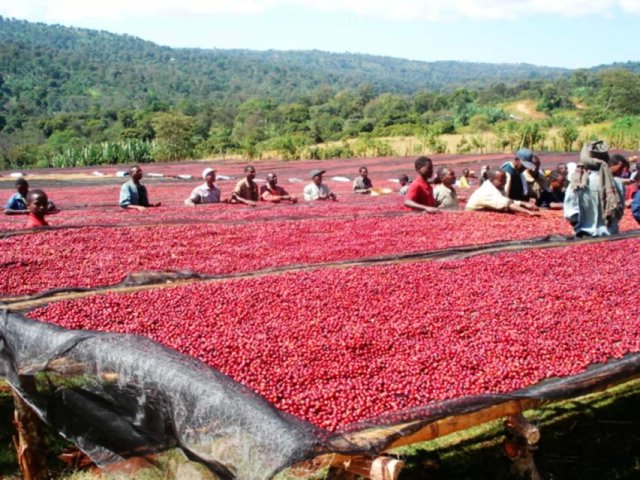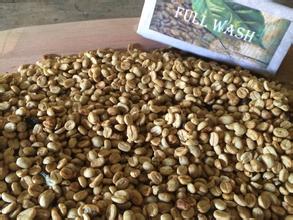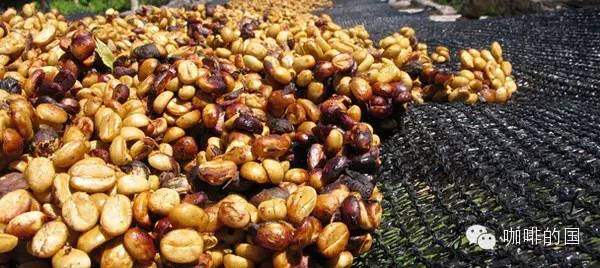Dense treatment method coffee raw bean treatment coffee raw bean treatment price high quality coffee raw bean treatment wholesale
4. Honey treatment method
Today, honey treatment is used in almost all the producing areas of Costa Rica. This method is also widely spread throughout Central America. Because the surface mucosa of coffee beans is extremely slippery and the sugar content is extremely high, it is often called "honey". In the process of honey treatment, coffee will leave some or all of the "honey" when it is dried. After the coffee fruit is picked, graded and peeled, it is placed on a drying bed to dry.
Because the drying time of the mucous membrane is very short, coffee beans hardly ferment during the drying process. The acidity of coffee beans processed by this method is slightly higher than that of natural washing, but much lower than that of natural washing and natural sun processing.
Third, the grade of honey treatment
Since the protagonist of this article is honey treatment, here are several different honey treatments and their effects on the final taste of coffee.
Some plantations that have not used honey treatment in the past have to use the tools at hand to process the coffee. Since raw bean processing plants in most regions, such as Latin America, Kenya and Ethiopia, used to use water to transport raw coffee beans, coffee beans lose some of their mucous membranes during transportation. In places such as Costa Rica, Brazil or Colombia, local processing plants used to use high-pressure washing machines, so part of the mucous membrane was removed during the peeling process. According to the amount of mucosal residue (40% Mel 100%), honey treatment is divided into 4 grades: 40%, 60%, 80% and 100%. Of course, some growers deliberately remove part of the mucous membrane to ensure that the coffee does not become sour due to fermentation during the drying process.
IV. Color grading of honey treatment
Today, some Costa Rican growers grade honey-treated coffee beans according to the color of the coffee. There are three levels: yellow, red and black. The change in color results from the length of light during the drying process of coffee.
The light time of raw coffee beans treated with yellow honey was the longest. Longer light means higher heat, so the coffee can be dried within a week. In general, the drying time of coffee depends on the local climate, temperature and humidity. The drying time of raw coffee beans treated with red honey is 2-3 weeks, usually due to weather or placed in a dark place. If the weather is clear, the grower should block part of the sun to reduce the sunshine time. The coffee beans treated with black honey were left in the dark for the longest time and the shorter the light time. The drying time of this coffee is at least 2 weeks. The black honey treatment of raw coffee beans is the most complex and the labor cost is the highest, so the price is the most expensive.
Country: Ethiopia
Grade: G2
Producing area: Yejia Xuefei
Baking degree: shallow baking
Treatment: washing
Variety: native species
Flavor: Jasmine, lemon, bergamot, honey, black tea
Cochel is located in a small producing area 25 kilometers southeast of Yegashafi, Ethiopia. It is a rich area for coffee production. It is also one of the three famous and micro-producing areas of Yegashafi. It has about 100,000 local residents, and coffee beans are the main source of income. The processing and processing equipment in this area is very advanced. CoffeeReview, a well-known coffee evaluation website, gave Kocher a high rating of 94 points for washed beans.
There are eight main coffee producing areas in Ethiopia: Nekempte (Lekempti) Gimbi Kinby, Limulim, Illubabor Ibedo, Djimma Gemma, Harrar Hara, Teppi/Bebeka Bebeca, Sidamo Sidamo, and Yirgacheffe Yega Chefe. Among them, the more well-known boutique coffee producing areas are Nekempte (Lekempti), Limu, Harrar, Sidamo and Yirgacheffe,Yirgacheffe, which are located in the Sidama region of Ethiopia. It can be seen that Yirgacheffe belongs to the smaller region of the Sidama producing area.
Country: Costa Rica
Grade: SHB
Producing area: central valley
Altitude: 1300-1500m
Annual rainfall: 3000 mm
Harvest month: December to February of the following year
Treatment method: red honey treatment
Variety: Kaddura, Kaduai
Producer: fire Phoenix Manor
Raw bean specification: 18 mesh
Flavor: dried fruit, vanilla, honey, thick and delicate taste
Located in the fertile hills of the Poas volcano in the central valley of Costa Rica, Fenghuang Manor is the first producer in Central and South America to produce honey treatment and sun-tanned coffee. It is a completely 100% organically grown coffee manor. The owner believes that organic farming is a better choice for environmental maintenance and family health, even though it faces many technical and organizational challenges. Still adhere to this belief. The high-quality coffee produced by this manor is very unique, and the biggest feature is its amazing sweetness! He became famous when he took part in the boutique coffee contest in 2009. During the harvest season, the sugar content of the fruit is measured by the sugar meter (Brixmeter) often equipped by the wine industry, and the best time and treatment are determined according to the brix sugar content. Only those with more than 20% sweetness will be exposed to the sun. The Brix value of general fruit is 14 for apple, 12 for lemon and 18 for passion fruit, but the coffee cherry of Fenghuang Manor can reach 21-22. The manor attaches great importance to the concept of environmental treatment, such as collecting Rain Water to process coffee, and the production and use of organic compost using earthworm farming (worm composting) makes the planting process completely free of chemical fertilizers and pesticides.

Important Notice :
前街咖啡 FrontStreet Coffee has moved to new addredd:
FrontStreet Coffee Address: 315,Donghua East Road,GuangZhou
Tel:020 38364473
- Prev

China Coffee Network discount recommendation [Special offer] Costa Rican Red Honey treated Fine Coffee Bean Red Honey
4. Honey treatment Today, honey treatment is used in almost all the producing areas of Costa Rica. This method is also widely spread throughout Central America. Because the surface mucosa of coffee beans is extremely sticky and smooth and the sugar content is extremely high, it is often called honey. In the process of honey treatment, coffee will leave some or all of the honey when it is dried. After picking, grading and peeling the coffee fruit, it will be
- Next

Coffee honey treatment coffee bean yellow honey treatment black honey treatment China Coffee net Costa
4. Honey treatment Today, honey treatment is used in almost all the producing areas of Costa Rica. This method is also widely spread throughout Central America. Because the surface mucosa of coffee beans is extremely sticky and smooth and the sugar content is extremely high, it is often called honey. In the process of honey treatment, coffee will leave some or all of the honey when it is dried. After picking, grading and peeling the coffee fruit, it will be
Related
- What is the meaning of lactic acid fermentation with coffee bean treatment?
- How to judge the state of foam by sound?
- How does the latte pull out the unicorn pattern? Come to get for a little trick to improve the flower pull!
- Will flower pulling affect the taste of the latte?
- Do you know the history of coffee?
- The difference between honey treatment and sun washing what is raisin honey treatment?
- What kind of milk can a novice use to make coffee foam to keep the foam longer? The correct method and skills of milking tutorial sharing
- Why do washed coffee beans taste sour? Flavor characteristics of washed Coffee
- Introduction to the skill of how to practice the size and height of water injection around the circle of hand-brewed coffee
- How do beginners practice coffee flower drawing from scratch?

